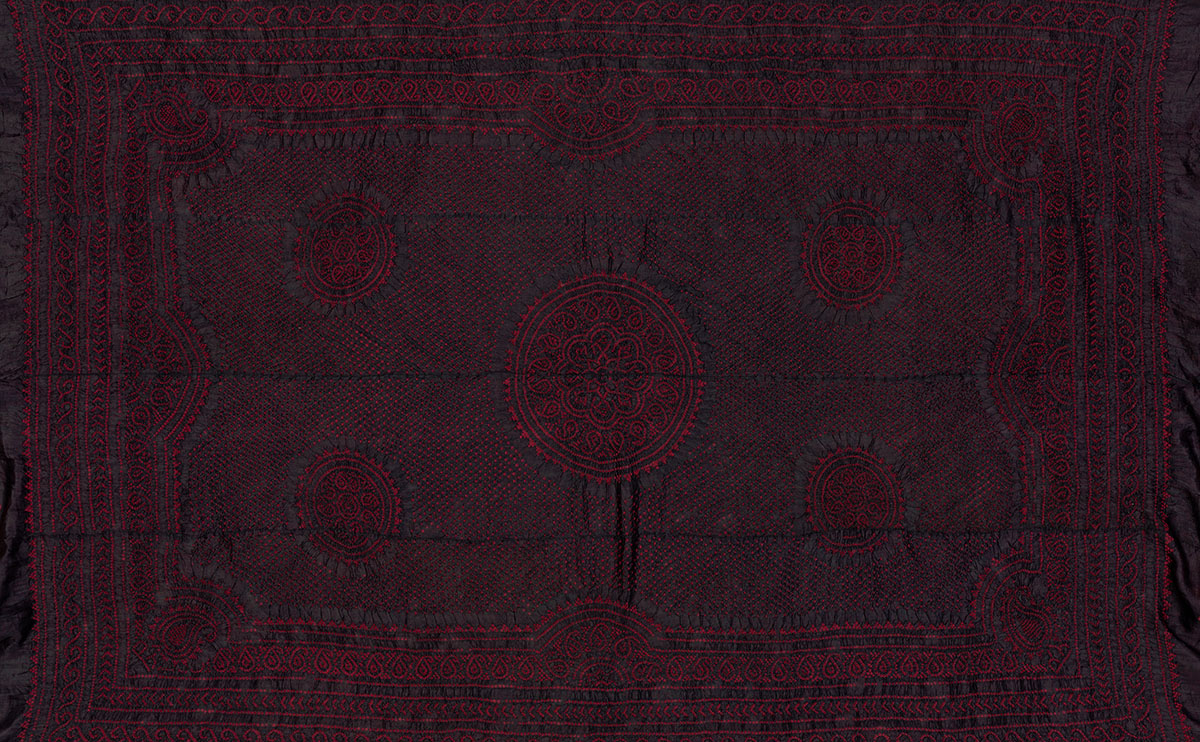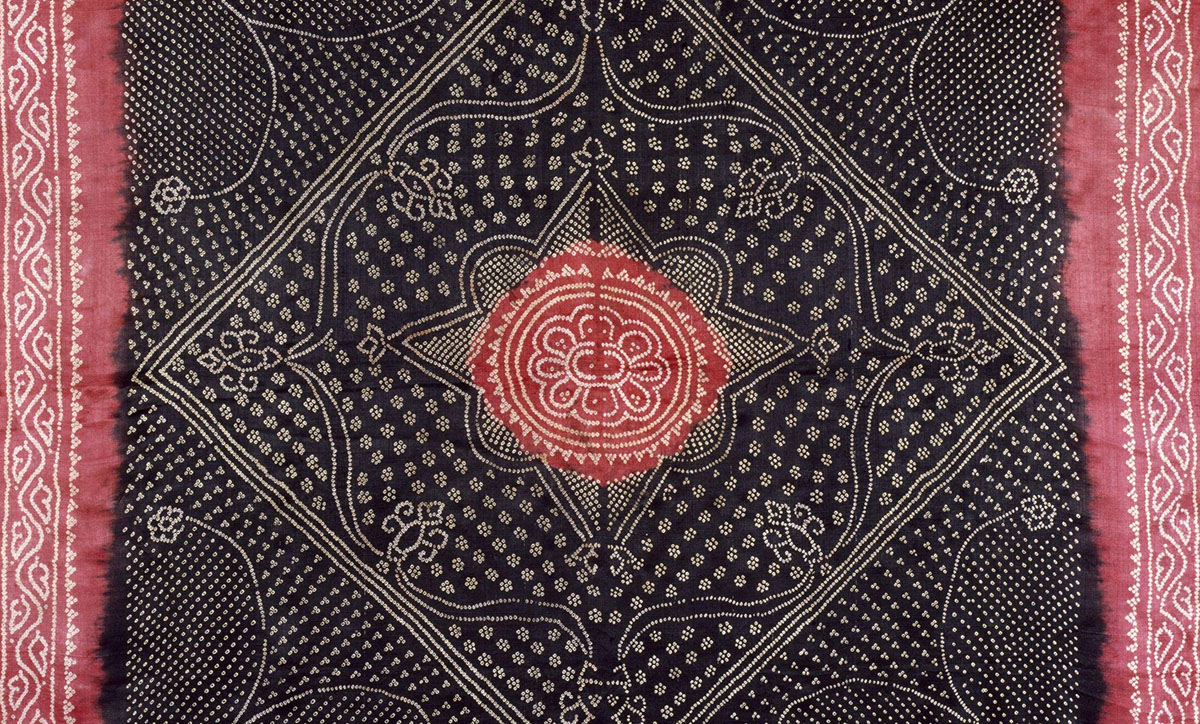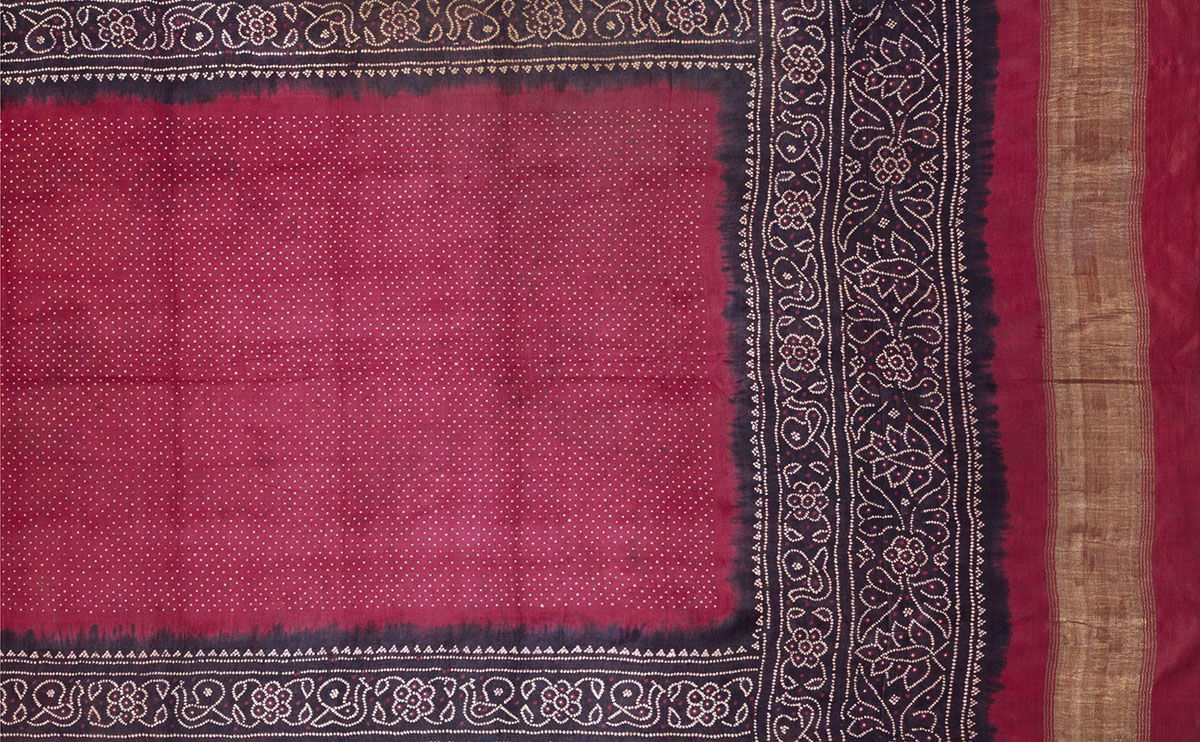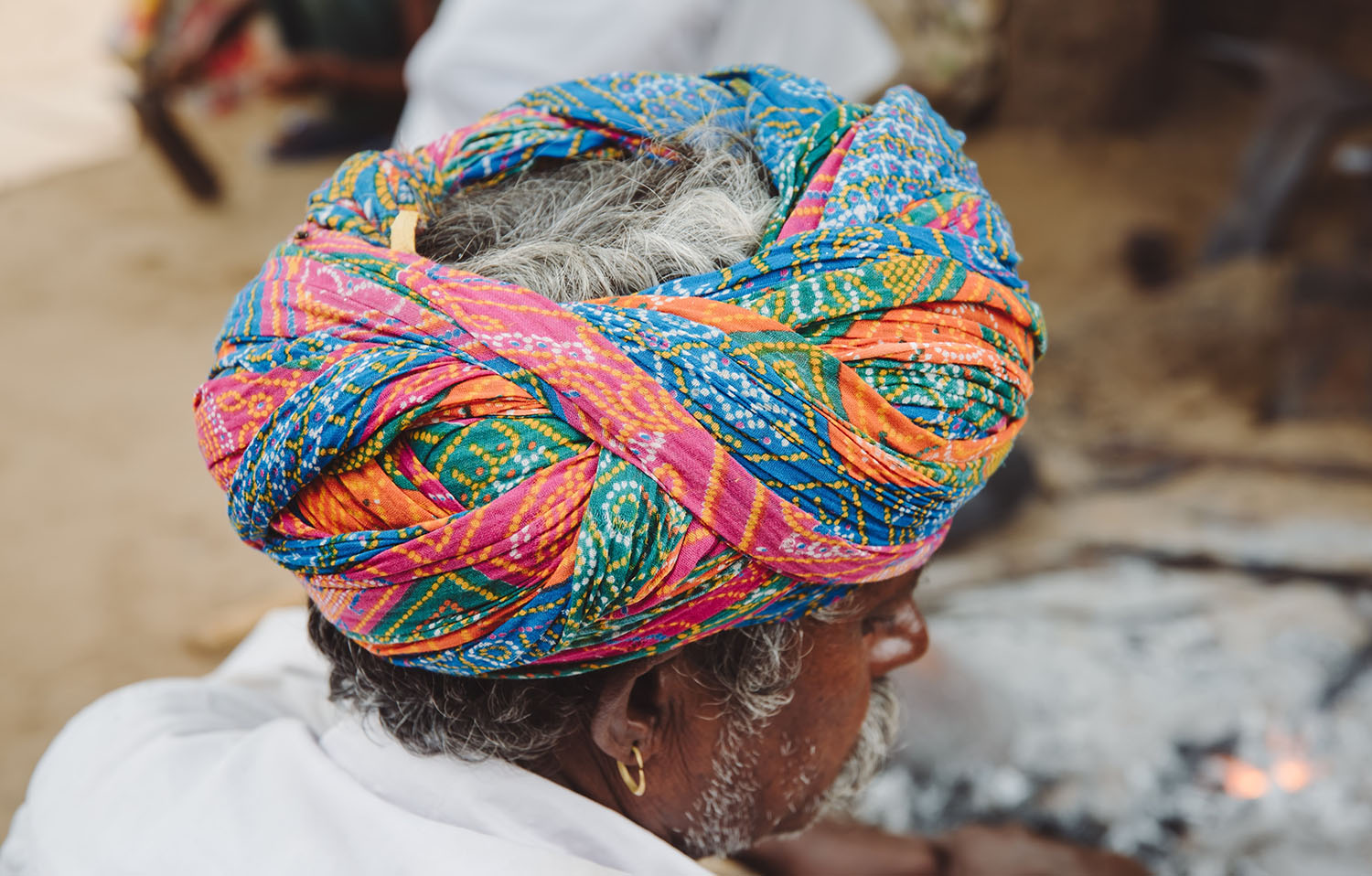ARTICLE
Bandhani
A tie-dyeing technique used to make patterned fabrics, Bandhani in its many variations is identified by light circular or square-shaped repeating motifs on a dark ground. It derives its name from the Sanskrit word baandh, meaning “to tie,” and is typically used to make unstitched attire such as odhnis and sarees. The design varies depending on the base fabric — usually plain-weave cotton, but also silk, muslin, crepe, georgette, chiffon or voile — and regional preferences and influences. Major centres for bandhani textile production include Mandvi, Bhuj, Jamnagar, Porbandar and Rajkot in Gujarat and Udaipur, Jaipur, Ajmer and Bikaner in Rajasthan.
Tie-dyeing techniques have been practised independently all over the world, with the earliest known examples dating back to Peru between 500 and 810 CE. Scholars believe that the first evidence of bandhani in South Asia can be seen in a sixth-century cave painting depicting the life of the Buddha in the Ajanta murals. An illustration from the fifteenth-century Jain manuscript Uttaradhyayanasutra shows a monk wearing a translucent white robe decorated with similar circular tie-dye patterns. Evidence from the fifteenth to sixteenth-century printed cloth fragments, found in Egypt and traced to Gujarat, suggest well-established and interconnected block printing and resist-dyeing traditions in India.
As a technique, bandhani is largely consistent across South Asia. The textile’s border and body are composed first, after which the patterns that will appear on the body are drawn up. The cloth is then folded, allowing the pattern to be mirrored and repeated across all sections of the cloth. The design is then printed onto one face of the cloth using specially carved wooden blocks coated with geru. While the blocks are the traditional printing tools, most dyers today apply the geru with stencils made of plastic Farma paper. As per the printed pattern, tiny sections of cloth are pinched by hand, or raised with a metal ring, and bound with a strong thread — traditionally by women known as bandhanaras. The entire cloth is then dipped in boiling dye for several minutes, washed and left to sun-dry. The small quantities of dye in the tied portions leak away while the concentrated dye in the surrounding cloth remains. Once the threads are untied, small dots of colour surrounded by lighter undyed rings are revealed. This process may be repeated multiple times for each colour included in the pattern, starting with the lightest shade. Eventually, patterns are formed out of the small circles where the fabric was tied.
Traditional bandhani designs are valued based on the execution of this technique — patterns with numerous small and closely spaced dots are preferred to those with fewer, widely spaced or irregular dots. This is both a result of the skill with which the fabric is dyed and the quality of the cloth. Materials such as silk or muslin, which are lighter and have a more desirable weave, conduce better to precise tying and dyeing.
The bandhani technique was originally practised by the Khatri community in Sindh and subsequently gained popularity among artisans of Gujarat, Rajasthan and Madhya Pradesh.
In all these regions, bandhani clothes are made for everyday use as well as special ceremonies and rituals. Sungadi, a very similar variation of bandhani found in Tamil Nadu, is practised by Saurashtrian artisans who migrated to Madurai in the seventeenth century at the behest of the local ruler.
The material of the base cloth, overall composition, motifs and patterns all carry symbolic value depending on the region and occasion on which bandhani fabrics are worn. For instance, members of the Rabari community wear woollen, embroidered bandhani odhnis, while Gujarati brides wear silk gharcholu odhinis and Khatri brides wear silk khombi veils with zari work on the border. Other traditional bandhani designs from Gujarat include the bavanbagh and the rasamandali, in which motifs such as mango trees, peacocks and elephants are also prevalent.
While Gujarati designs usually feature repeating motifs, bandhani fabrics from Rajasthan typically have concentric, multi-coloured circles and large dots called dabbi. Initially produced for royalty, using expensive ingredients such as saffron and a colour palette that varied with seasons and occasions, they came to be produced for use by the local communities, with the colours standing as social designators of community, social position, occupation and marital status of the person wearing it. Widely used for the cloth headgear or Saafa of Rajasthani men, the tie-dyed multi-coloured bandhani, as well as leheriya, turbans are reserved for elderly or respected members of the community, while the block-printed imitations are more likely to be used by the younger generations. Bishnoi women typically wear a red patterned odhni with black circular forms, while mothers with newborn children wear a yellow veil called piliyo, with red dots if the child is male.
In the Malwa region of Madhya Pradesh, artisans who originally migrated from Rajasthan continue to make peeriya, which are similar to Rajasthani piliyo, the bridal suhaag chunari and renia lugda, typically worn by elderly women of the Jat, Banjara and Chamar communities.
The present-day popularity of bandhani textiles, particularly the saree, has led to them being manufactured widely. However, the high level of skill coupled with the time-consuming nature of the work has given rise to a disparity in demand and supply. This has led to the growth of printed imitation bandhani designs, which has adversely affected variations such as sungadi textiles to the point of effectively substituting tie-resist dyeing techniques altogether.
Bibliography
Our website is currently undergoing maintenance and re-design, due to which we have had to take down some of our bibliographies. While these will be re-published shortly, you can request references for specific articles by writing to hellomapacademy@map-india.org.












